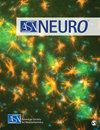Clock Genes in Glia Cells
IF 3.9
4区 医学
Q2 NEUROSCIENCES
引用次数: 5
Abstract
Circadian rhythms are periodic patterns in biological processes that allow the organisms to anticipate changes in the environment. These rhythms are driven by the suprachiasmatic nucleus (SCN), the master circadian clock in vertebrates. At a molecular level, circadian rhythms are regulated by the so-called clock genes, which oscillate in a periodic manner. The protein products of clock genes are transcription factors that control their own and other genes’ transcription, collectively known as “clock-controlled genes.” Several brain regions other than the SCN express circadian rhythms of clock genes, including the amygdala, the olfactory bulb, the retina, and the cerebellum. Glia cells in these structures are expected to participate in rhythmicity. However, only certain types of glia cells may be called “glial clocks,” since they express PER-based circadian oscillators, which depend of the SCN for their synchronization. This contribution summarizes the current information about clock genes in glia cells, their plausible role as oscillators and their medical implications.神经胶质细胞中的时钟基因
昼夜节律是生物过程中的周期性模式,使生物体能够预测环境的变化。这些节律是由视交叉上核(SCN)驱动的,这是脊椎动物的主生物钟。在分子水平上,昼夜节律是由所谓的时钟基因调节的,它以周期性的方式振荡。时钟基因的蛋白质产物是控制自身和其他基因转录的转录因子,统称为“时钟控制基因”。除SCN外,还有几个大脑区域表达生物钟基因的昼夜节律,包括杏仁核、嗅球、视网膜和小脑。这些结构中的神经胶质细胞可能参与节律性。然而,只有某些类型的神经胶质细胞可以被称为“神经胶质时钟”,因为它们表达基于per的昼夜节律振荡器,这依赖于SCN的同步。这篇文章总结了目前关于神经胶质细胞中的时钟基因的信息,它们作为振荡器的合理作用及其医学意义。
本文章由计算机程序翻译,如有差异,请以英文原文为准。
求助全文
约1分钟内获得全文
求助全文
来源期刊

ASN NEURO
NEUROSCIENCES-
CiteScore
7.70
自引率
4.30%
发文量
35
审稿时长
>12 weeks
期刊介绍:
ASN NEURO is an open access, peer-reviewed journal uniquely positioned to provide investigators with the most recent advances across the breadth of the cellular and molecular neurosciences. The official journal of the American Society for Neurochemistry, ASN NEURO is dedicated to the promotion, support, and facilitation of communication among cellular and molecular neuroscientists of all specializations.
 求助内容:
求助内容: 应助结果提醒方式:
应助结果提醒方式:


